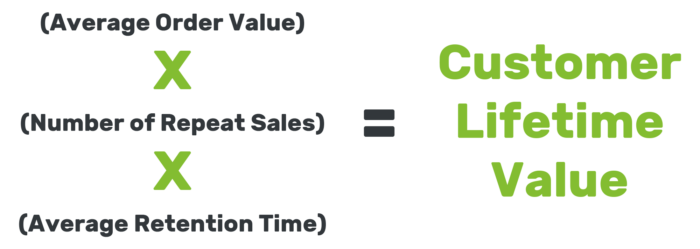How to Grow Your Ecommerce Traffic
4. Calculating the ROI of your marketing campaigns
Contents
To sustainably grow your website’s traffic, you have to first determine the ROI of your various marketing tactics. But it can be a tricky subject because marketing ROI is more complex than brand- and product-focused store owners assume; there are several methods you can use and their effectiveness depends on your organizational goals, the channel in question and the specifics of your operations.
It’s true that everything can be quantified in some way, but the simplest ROI calculations (net profit divided by marketing cost) fail to tell the whole story. Marketing strategy involves variables that are measured more obliquely, and more detailed ROI formulas may be necessary to capture them accurately.
Customer lifetime value (LTV)
Learning how to calculate a customer’s lifetime value (LTV) is crucial because not every marketing interaction is a one-off transaction (i.e. spending X nets you a single sale worth Y). In many cases, successfully reaching a customer through a marketing campaign should ideally result in that buyer coming back to your company time and time again to make repeat purchases. Fortunately, with some returning customers you no longer have to factor in the cost of incentives, referrals or ad spend. This means the initial marketing expenses to acquire this shopper do not have to be repeated for every transaction, and they can be amortized across your relationship with them.

In the purest sense, calculating LTV is exceedingly simple: you multiply the value of the average order by the number of repeat sales in a given period by the average retention time to get the total value for that customer. There are certain circumstances where the math gets slightly more complex, but this basic formula can be easily adapted to everything from recurring subscription-based orders to irregular purchases.
Keeping your social media ads profitable
One of the most attractive things about social media ad buys is how affordably you may promote your product to a massive audience. Paying for traffic on platforms such as Facebook is simple to set up, and can benefit Ecommerce businesses of any size selling any kind of product. Where companies get into trouble is they don’t realize these small incremental costs per ad can accumulate; and you’ll squander your marketing dollars if they aren’t offset by ample conversions.

Some organizations will tout their success in social media advertising by promoting high clickthrough rates (CTR), increases in “likes,” and low cost-per-click (CPC), but these numbers do not tell a complete story. You need to understand beforehand how much you can spend on your ads and still expect the program to be profitable. Here’s an illustrative example which shows that if you take the net profit from the sale of the product you’re advertising and divide it by the cost of each ad, you’ll have the necessary conversion ratio to ensure that the ad buy is profitable.
An easy calculator for determining ad spending
The above example is a simplistic yet powerful way to quickly determine whether or not you can expect to make money from your advertising campaign, but it’s necessary to capture more data to determine the true value of your paid promotions. Statistics such as CTR and impressions do matter even if they aren’t always satisfactory on their own, and there are ways to incorporate these concepts into a valuation to obtain a detailed assessment of the net gain or loss from a specific ad initiative.
Noah Kagan developed a handy spreadsheet that captures several levels of data related to digital advertising to present ROI in a straightforward manner. Once you’ve determined the expected cost of acquisition per user and profit contribution per user, you can quickly see whether or not an ad campaign is worth investing in further.
Using other quantitative measures
For some Ecommerce startups, ROI expressed in terms of profit is still a ways down the road. They may simply be trying to draw traffic to their site in a pre-launch phase and sign up new users who will contribute revenue further along in the company’s lifespan. That doesn’t mean, however, that organizations in these situations can’t still quantify their marketing initiatives. In fact, it’s necessary to do so if you want to arrive at a data-driven understanding of how well your marketing plan manages to educate and inform your prospects.
Here’s a great example of an intuitive process to determine marketing effectiveness in a pre-launch campaign, before the company has even had a chance to record actual revenue. It requires you to list all of the marketing channels that will be utilized to try and sign up potential customers, and estimates for expected traffic, CTR and conversion rates. You can then compare these results as you progress with your subscriber base and pinpoint specific outlets that are falling short of your goals.
When you do find paid marketing channels that are sustainably profitable, you will want to scale them until you exhaust that resource.